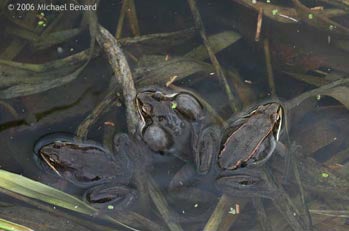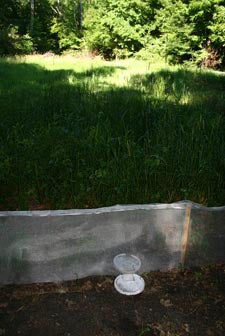
Dispersal and Local Adaptation
PI: Mike Benard (Case Western Reserve)
Summary
In my research on the ESGR, I am focused on answering three questions: 1) How do environmental conditions alter dispersal and gene flow between populations? 2) How does dispersal and gene flow between populations limit adaptation to local conditions? 3) Does local adaptation influence population growth rate and extinction probability? I am investigating these questions in collaboration with Earl Werner and members of his laboratory. We are using a combination of laboratory experiments, reciprocal transplant experiments, and mark-recapture studies of natural and manipulated populations of the wood frog, Rana sylvatica.

Wood frog popualtions on the ESGR present an excellent system in which to study these questions. Wood frogs are one of the few amphibians that successfully reproduce in two distinct aquatic environments on the ESGR: open-canopy ponds and closed-canopy ponds. Open-canopy ponds have higher productivity, temperatures, dissolved oxygen and predator densities than closed canopy ponds. Different tadpole phenotypes are favored in these different environmental conditions, so local adaptation to canopy-type may occur in these populations. Additionally, the geographic distribution of the pond types is such that there are isolated ponds of each canopy type, as well as examples in which ponds of different canopy types are close to one another. Thus there is the potential for different levels of dispersal and local adaptation to occur in these populations.
Relevant Links:
Academic homepage
photography / natural history homepage
Return to Research Projects list
